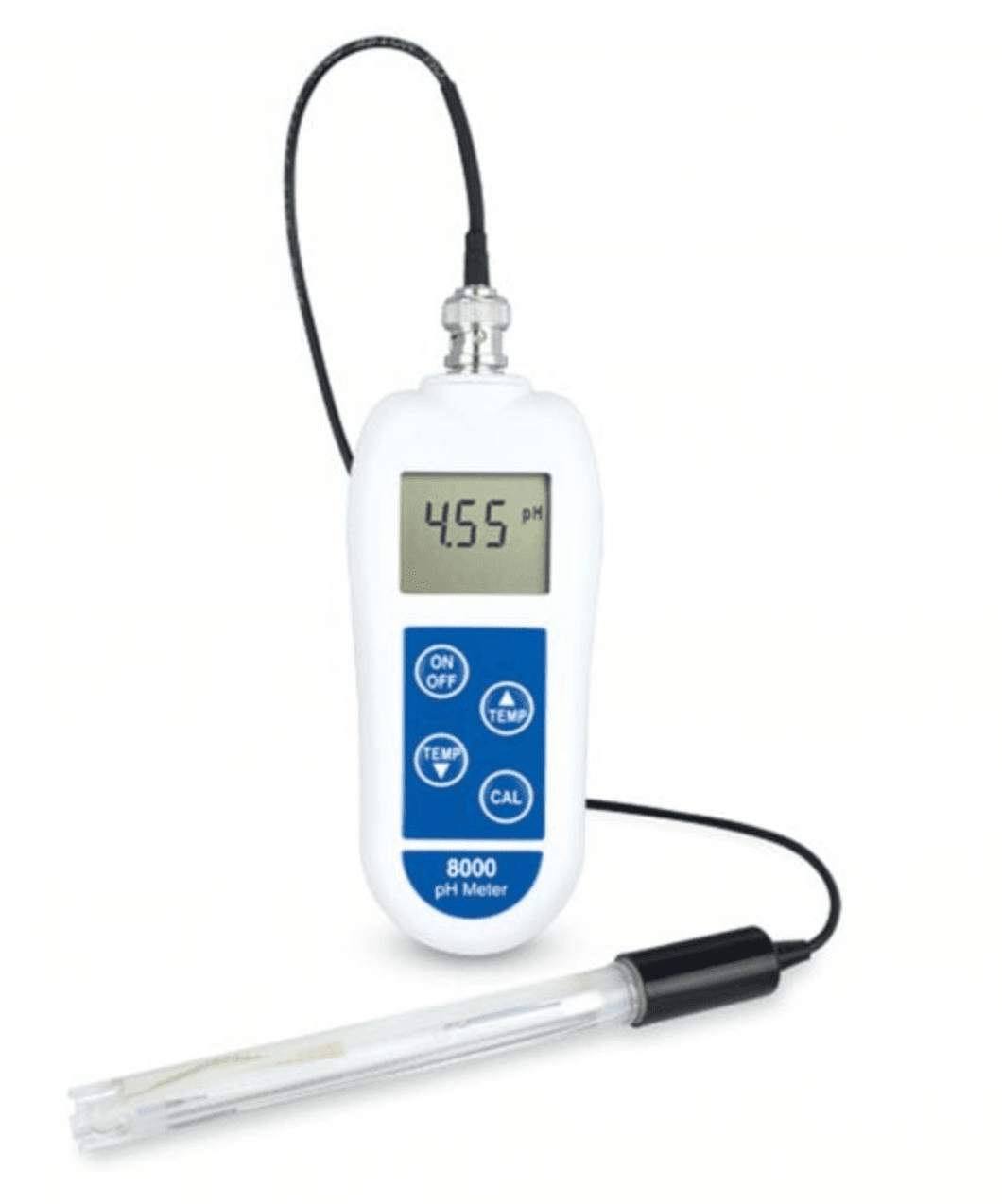
pH test meter and Answers
Once you start reading up about pH and the mechanisms at play around it, you will never stop. It just keeps getting more fascinating each time. And what’s the harm if someone intends to gather knowledge about another aspect of their everyday lives? So, here is an accumulation of possible questions and their answers, which can add to your understanding of testing strips and how they help determine the pH of substances surrounding us.
How to use a pH test strip?
It is similar to a chemistry lab experiment. First of all, dip the tester strip in the targeted substance for about two seconds. Allow it to react for 10 seconds until you observe a change. Because the strip comes in contact with either an acid or an alkaline substance, it alters in colouration. If the substance has a highly acidic concentration, the pH test strip turns into one darker shade of red. Alternatively, if the solution is alkaline, it levels up the blue shade. The available indicator scale that comes along with the strip gives a measuring parameter to determine how acidic or alkaline the liquid is.
What is the difference between pH test strips and a pH test meter?
The most distinctive difference between the two is that a pH meter contains computer-identification criteria encoded, making the results more accurate and to the point. They show results to a hundredth of an inch. However, that isn’t the case when it comes to strips. They are relatively less accurate. Nonetheless, they are a very handy option when it comes to testing. They can quickly determine the nature of a solution. But if you have time and resources in hand, you are always recommended to resort to a pH meter.
How to read the test results from a pH test meter?
Most pH test strips are accompanied by a special double colour indicator range for measuring the narrowly indicated pH level. Through this parameter, one can conveniently determine the clearest and most accurate indication by comparing the colour on the strip with the indicator chart. However, one must pay attention to the presence of impurities that can influence the readings and colour changes. The unwanted substances have a specific nature that affects the original composition of a solution. For example, while measuring the pH of our body, which is done by testing the urine or saliva, other substances present can affect it. The medicines, neutral salt, protein, colloid, alkaloid and alcohol content are the unwanted substances in this case. So, in such cases, it is better to use the reading of the top pad, which has a more stable performance than the lower pad.
What causes fluctuations in the readings? Is it a normal pH test meter reading
Our surrounding conditions can largely affect what we see in the pH strip meter. Let’s take the example of a water body with a seasonal change. The pH seemingly differs. This mostly occurs because, in the rainy season, a lot of dirt and impurities accumulate that change the nature of the water. Similarly, the breeding season can lead to an alteration of the body. Any form of contamination can lead to a change in the pH readings. So, close attention can help us determine the hidden reasons. The best suggestion to tackle this and get a more concrete solution is to test the pH under the same conditions over some time. This will give you a bigger picture of your progress and an average of the everyday readings. Knowing more about pH and pH test strips is an excellent way of noticing minute changes in and around our body that can help us better adapt.
Answers to the why, when and how related to PH test strips
You will never stop once you start reading up about pH and the mechanisms at play around it. It just keeps getting more fascinating each time. And what’s the harm if someone intends to gather knowledge about another aspect of their everyday lives? So, here is an accumulation of possible questions and their answers, which can add to your understanding of testing strips and how they help determine the pH of substances surrounding us. How to use a pH test strip? It is similar to a chemistry lab experiment. First of all dip the tester strip in the targeted substance for about two seconds. Allow it to react for 10 seconds until you observe a change. Because the strip comes in contact with either an acid or an alkaline substance, it alters in colouration. In case the substance has a highly acidic concentration, the pH test strip turns into one darker shade of red. Alternatively, if the solution is alkaline, it levels up the blue shade. The available indicator scale that comes along with the strip gives a measuring parameter to determine how acidic or alkaline the liquid is. What is the difference between pH test strips and pH test meters? The most distinctive difference between the two is that a pH test meter contains computer-identification criteria encoded as a result, which makes the results more accurate and to the point. They show results to a hundredth of an inch. However, that isn’t the case when it comes to strips. They are relatively less accurate. Nonetheless, they are a very handy option when it comes to testing. They can quickly determine the nature of a solution. But if you have time and resources in hand, you are always recommended to resort to a pH test meter. How to read the test results? Most pH test strips are accompanied by a special double colour indicator range for measuring the narrowly indicated pHs. Through this parameter, one can conveniently determine the clearest and most accurate indication by comparing the colour on the strip with the indicator chart. However, one must pay attention to the presence of impurities that can influence the readings and colour changes. The unwanted substances have a specific nature that affects the original composition of a solution. For example, while measuring our body's pH, which is done by testing the urine or saliva, other substances present can affect it. The medicines, neutral salt, protein, colloid, alkaloid and alcohol content are the unwanted substances in this case. So, in such cases, it is better to use the reading of the top pad, which has a more stable performance than the lower pad. What causes fluctuations in the readings? Is it normal? Our surrounding conditions can largely affect what we see in the pH strip meter. Let’s take the example of a water body with a seasonal change. The pH seemingly differs. This mostly occurs because, in the rainy season, a lot of dirt and impurities accumulate that change the nature of the water. Similarly, the breeding season can lead to an alteration of the body. Any form of contamination can lead to a change in the pH readings. So, close attention can help us determine the hidden reasons. The best suggestion to tackle this and get a more concrete solution is to test the pH under the same conditions over some time. This will give you a bigger picture of your progress and an average of the everyday readings. Getting to know more about pH and pH test strips is an excellent way of noticing minute changes in and around our body that can help us in better adaptation.





 How to Use pH Test Strips: Read and Interpret pH Strip Indicator Colors.
How to Use pH Test Strips: Read and Interpret pH Strip Indicator Colors.
 The Incredible Methodology For Formulating Dimethyl Sulfoxide formula.
The Incredible Methodology For Formulating Dimethyl Sulfoxide formula.










